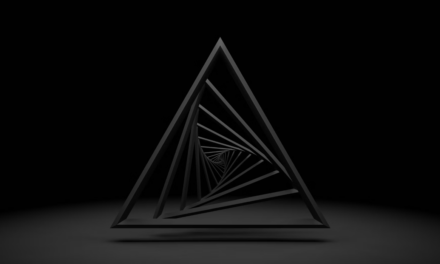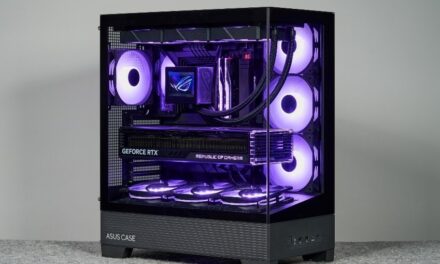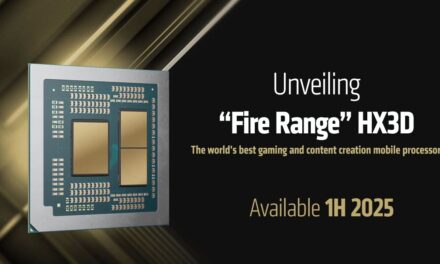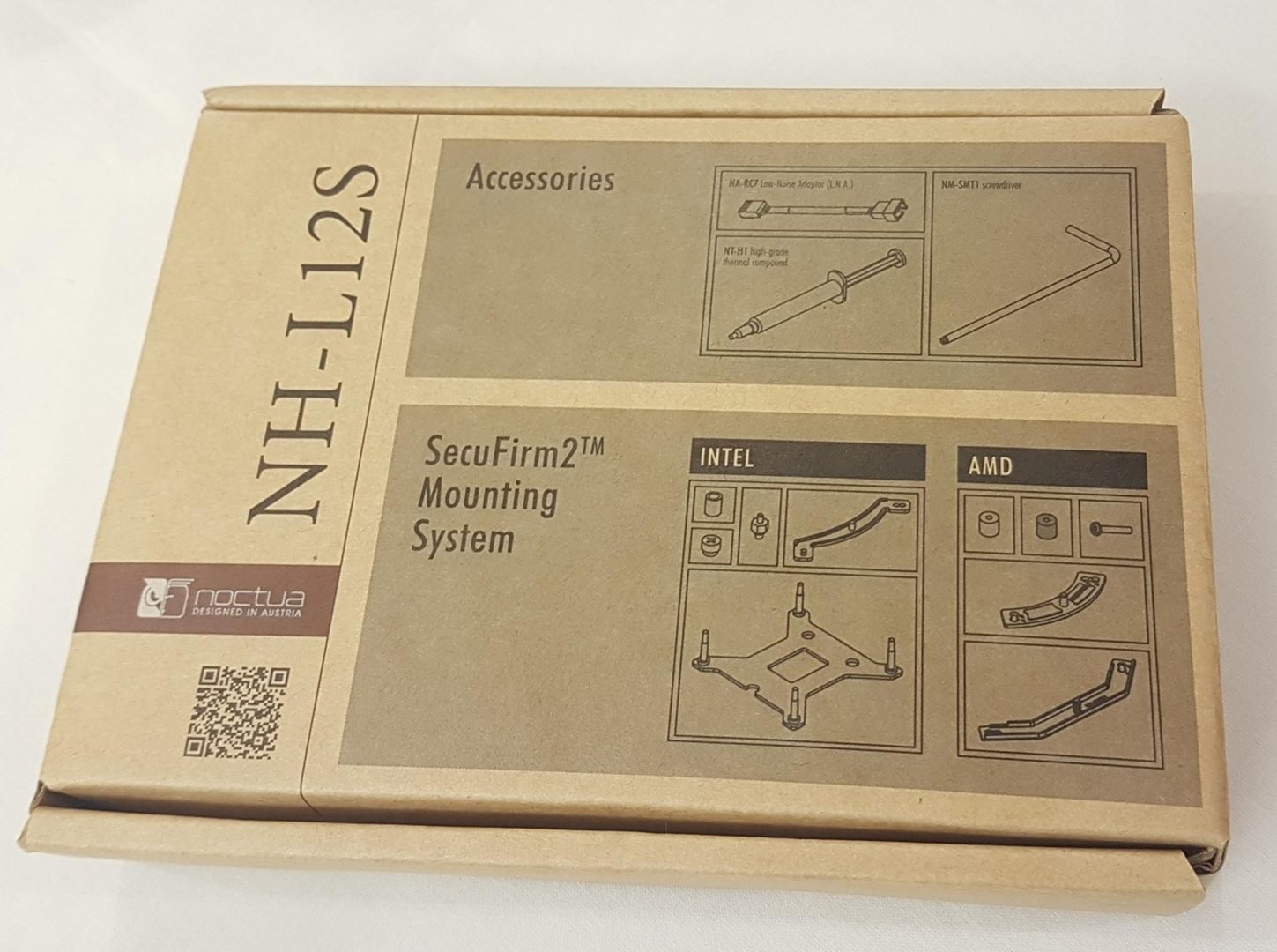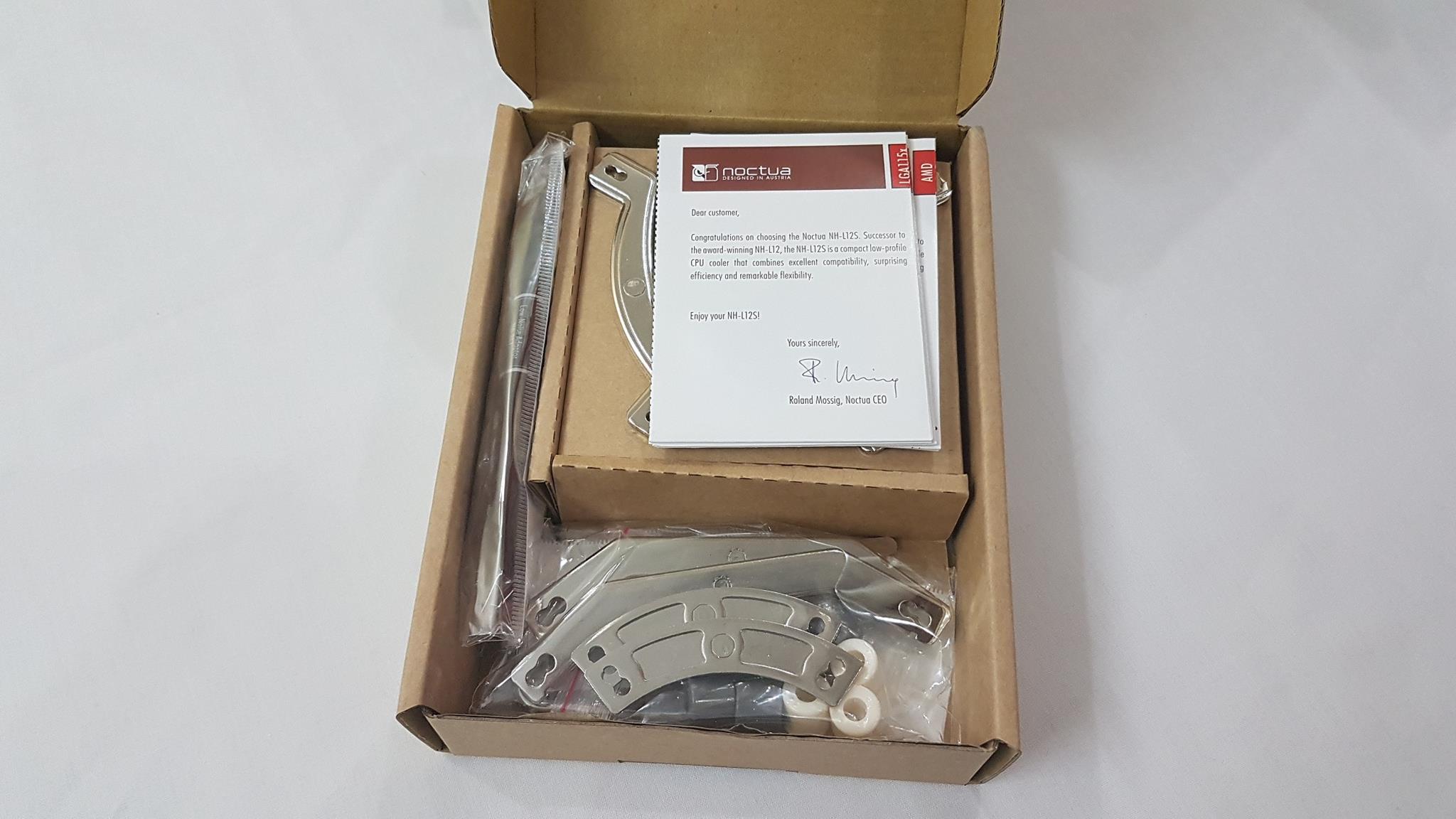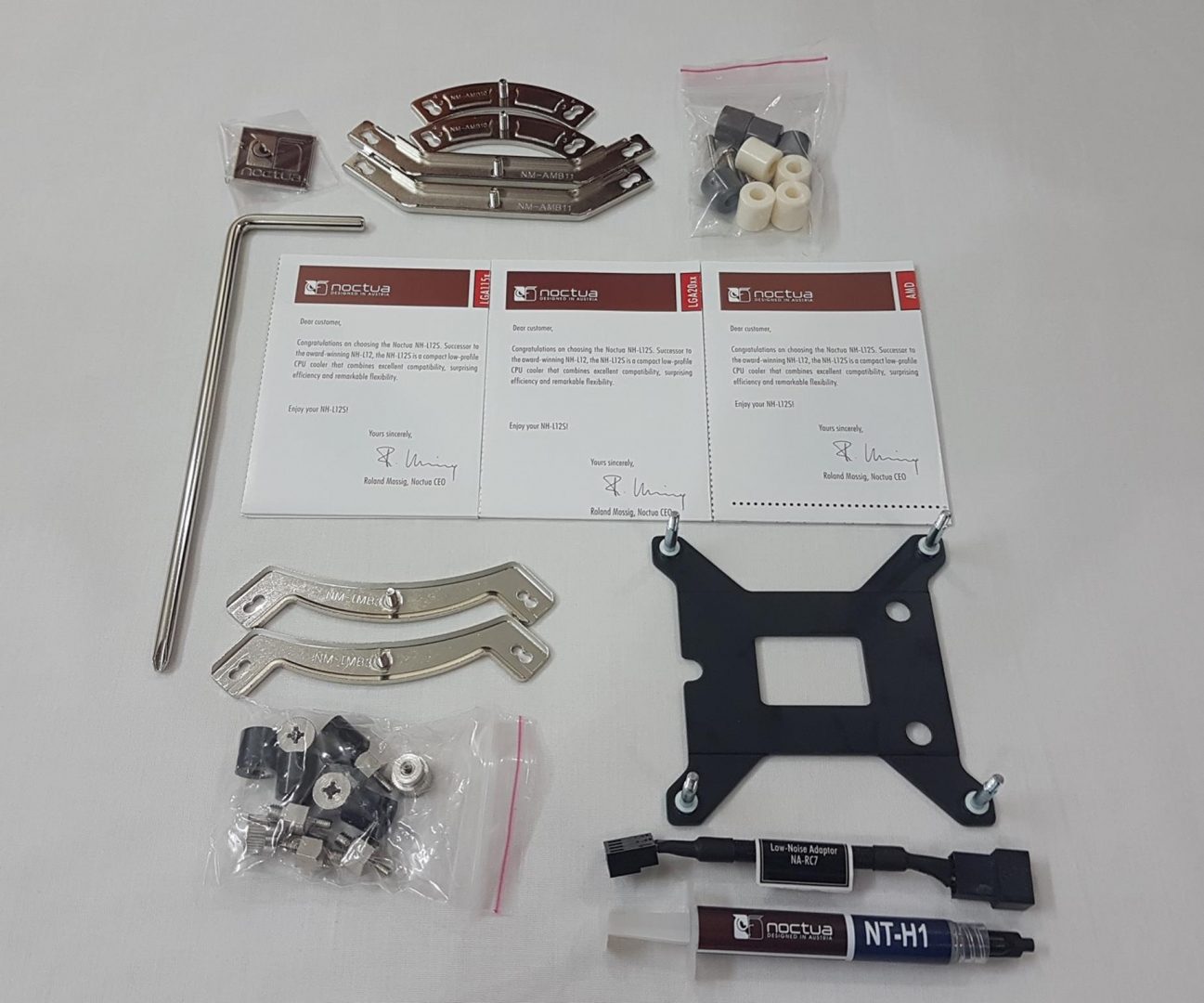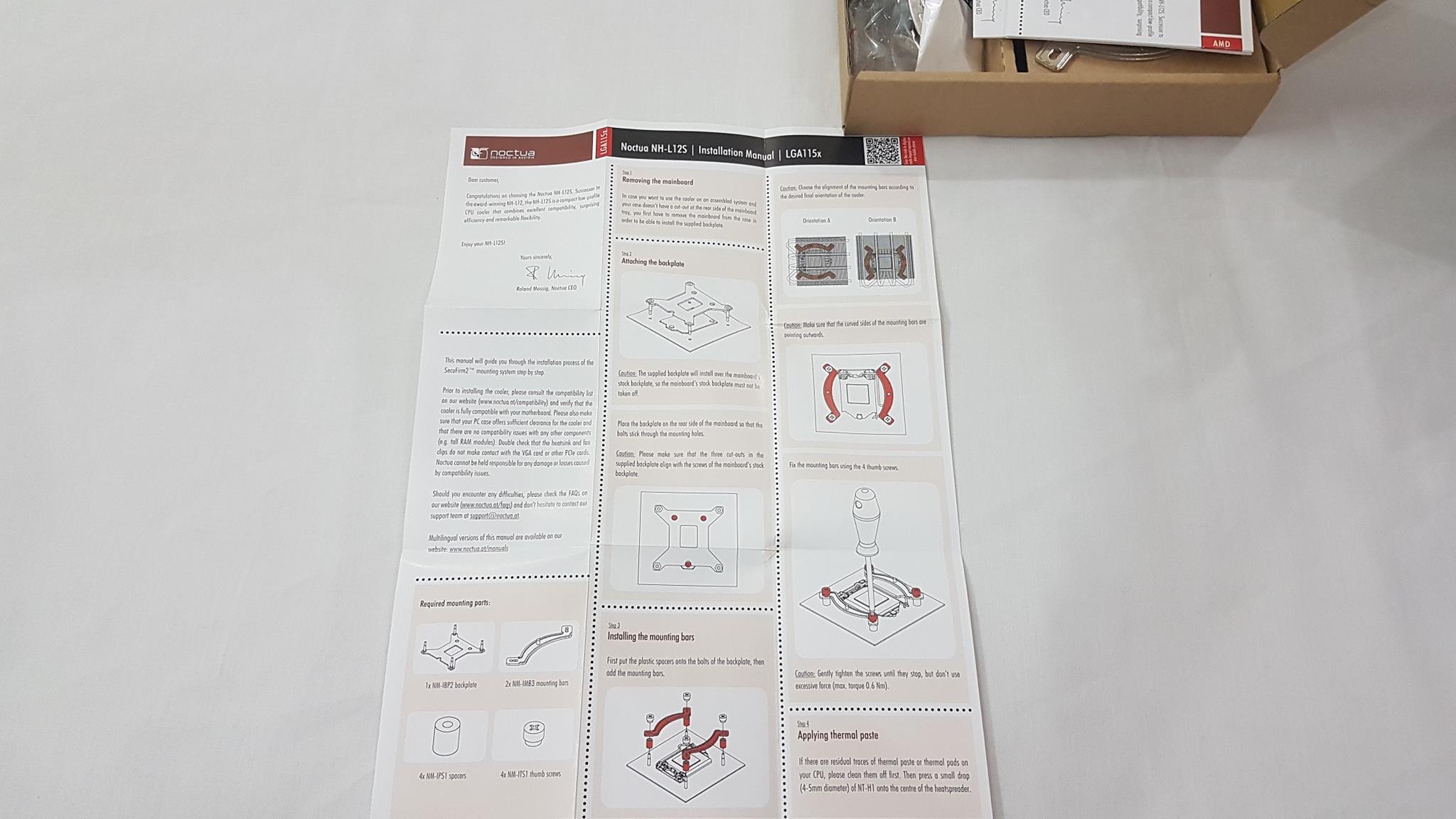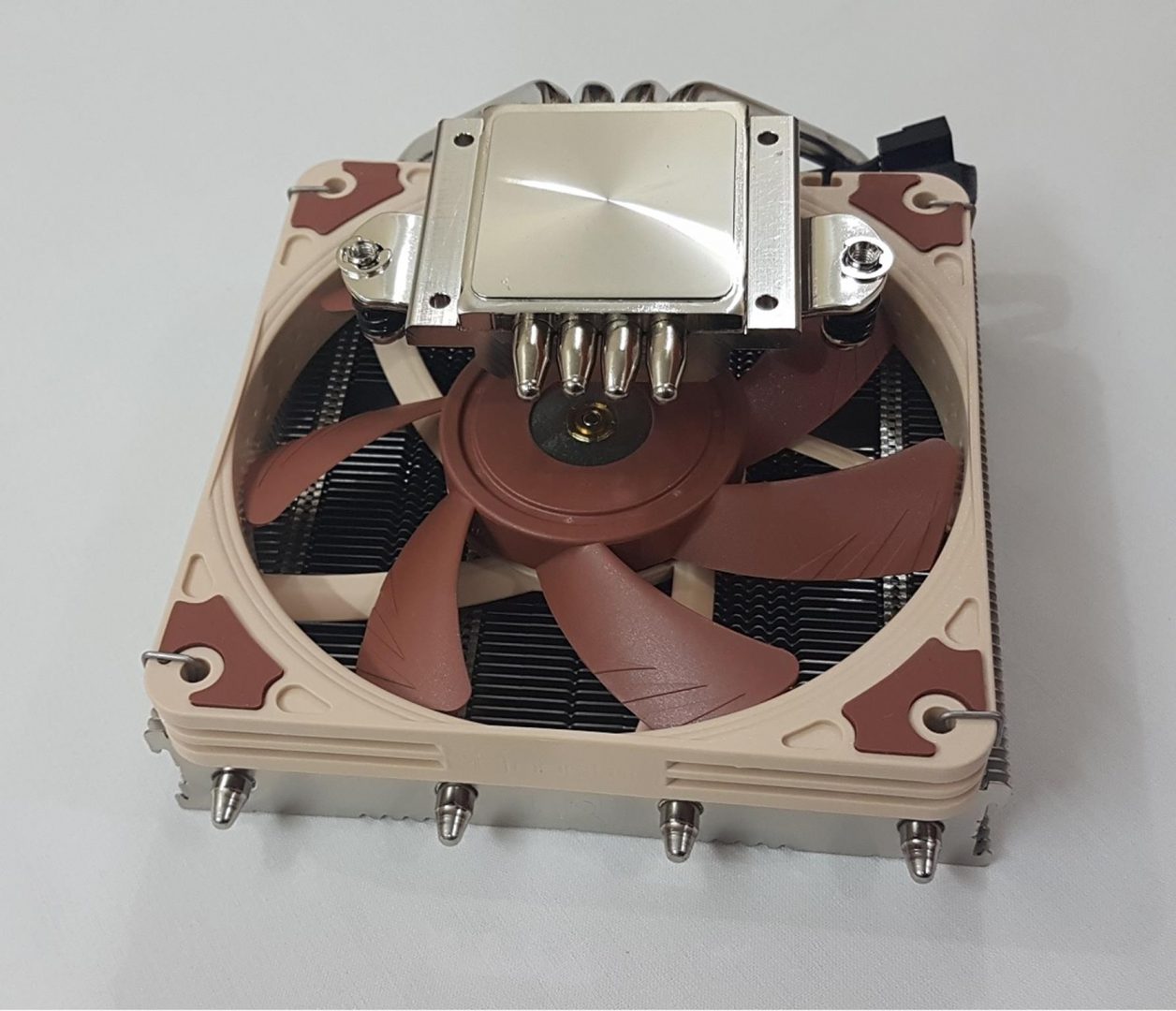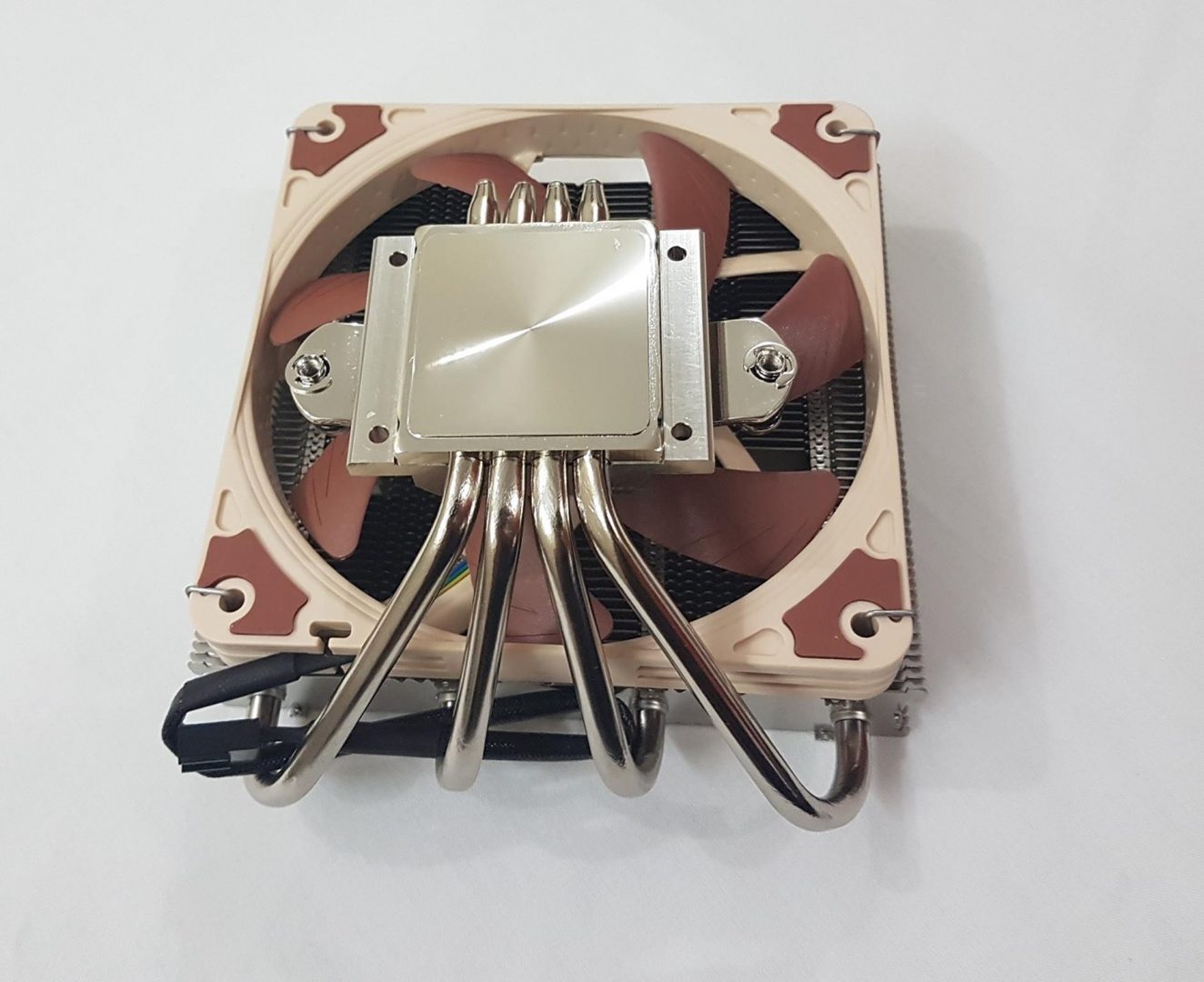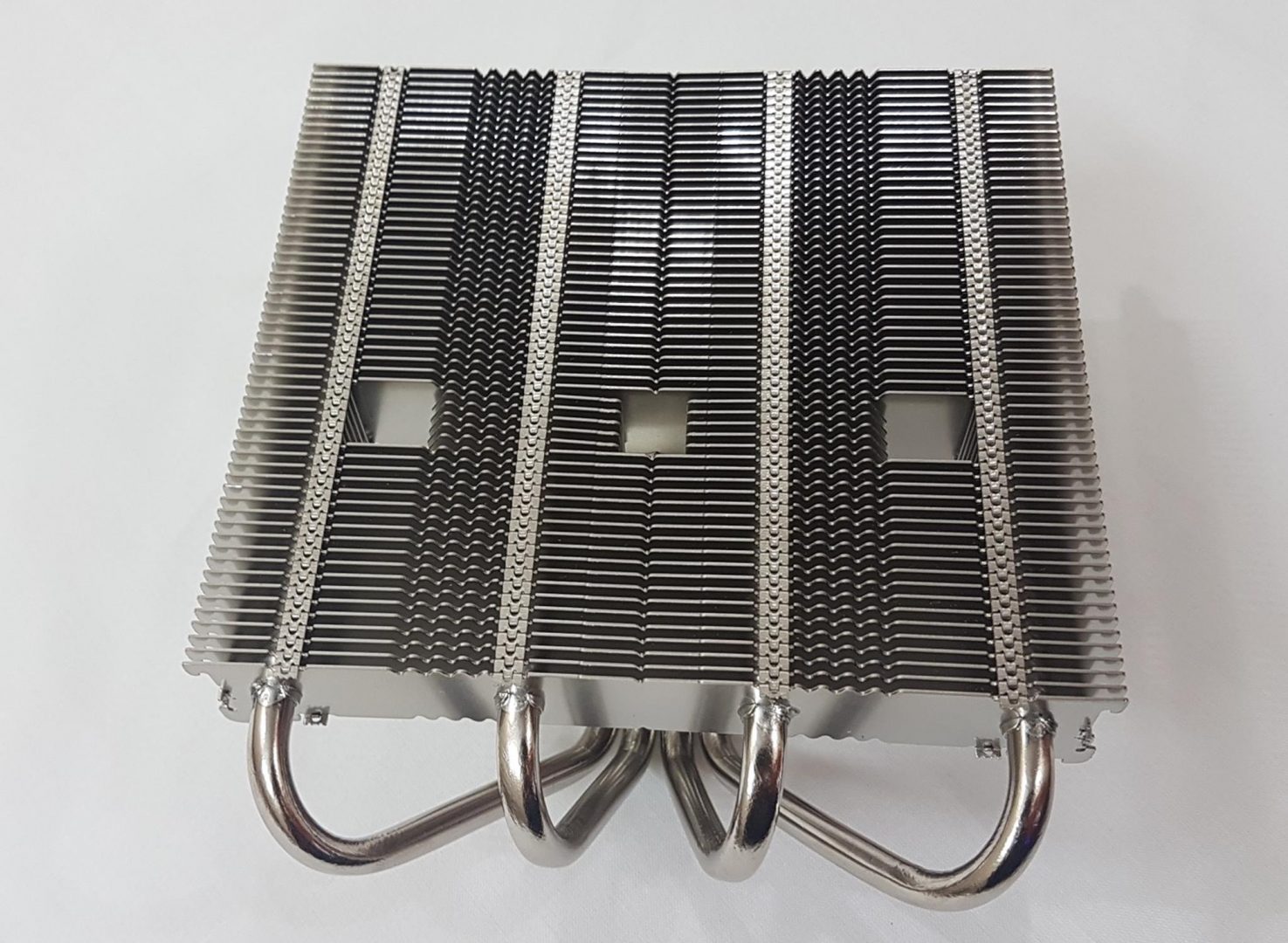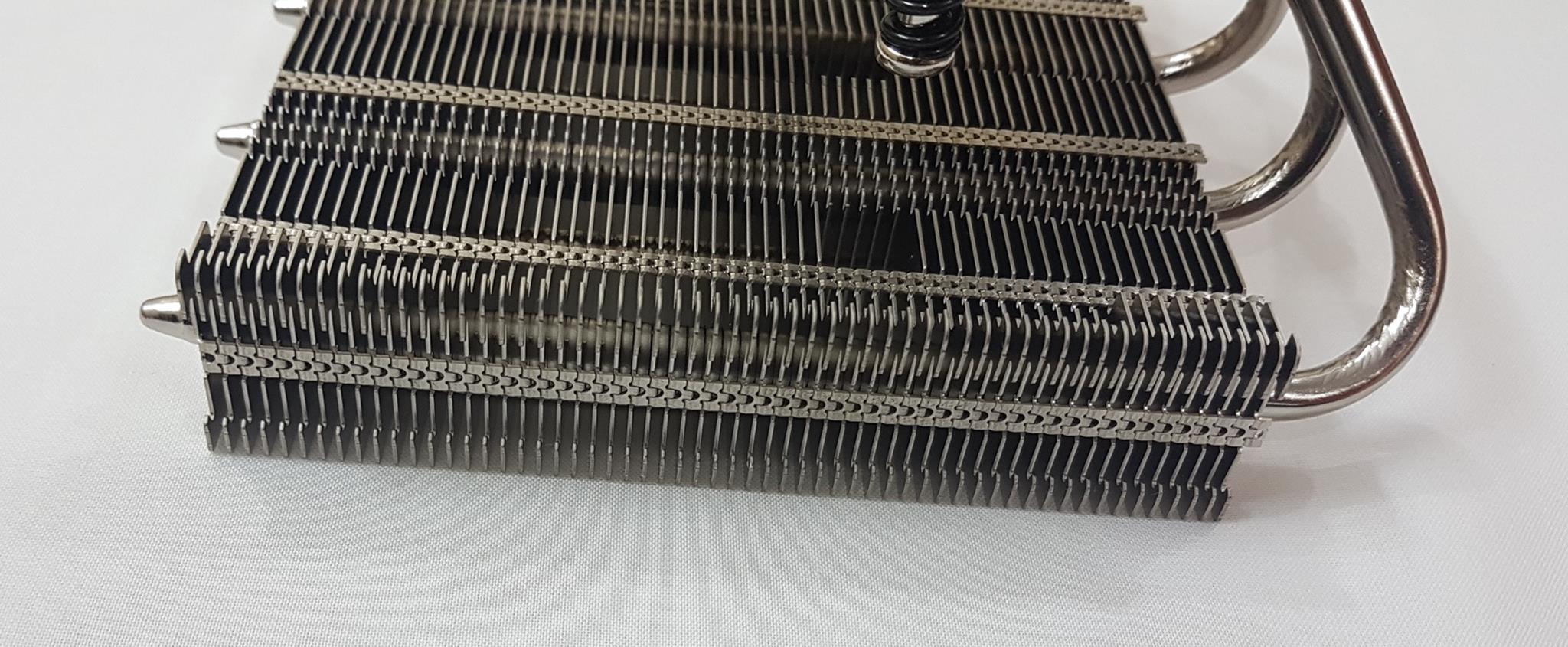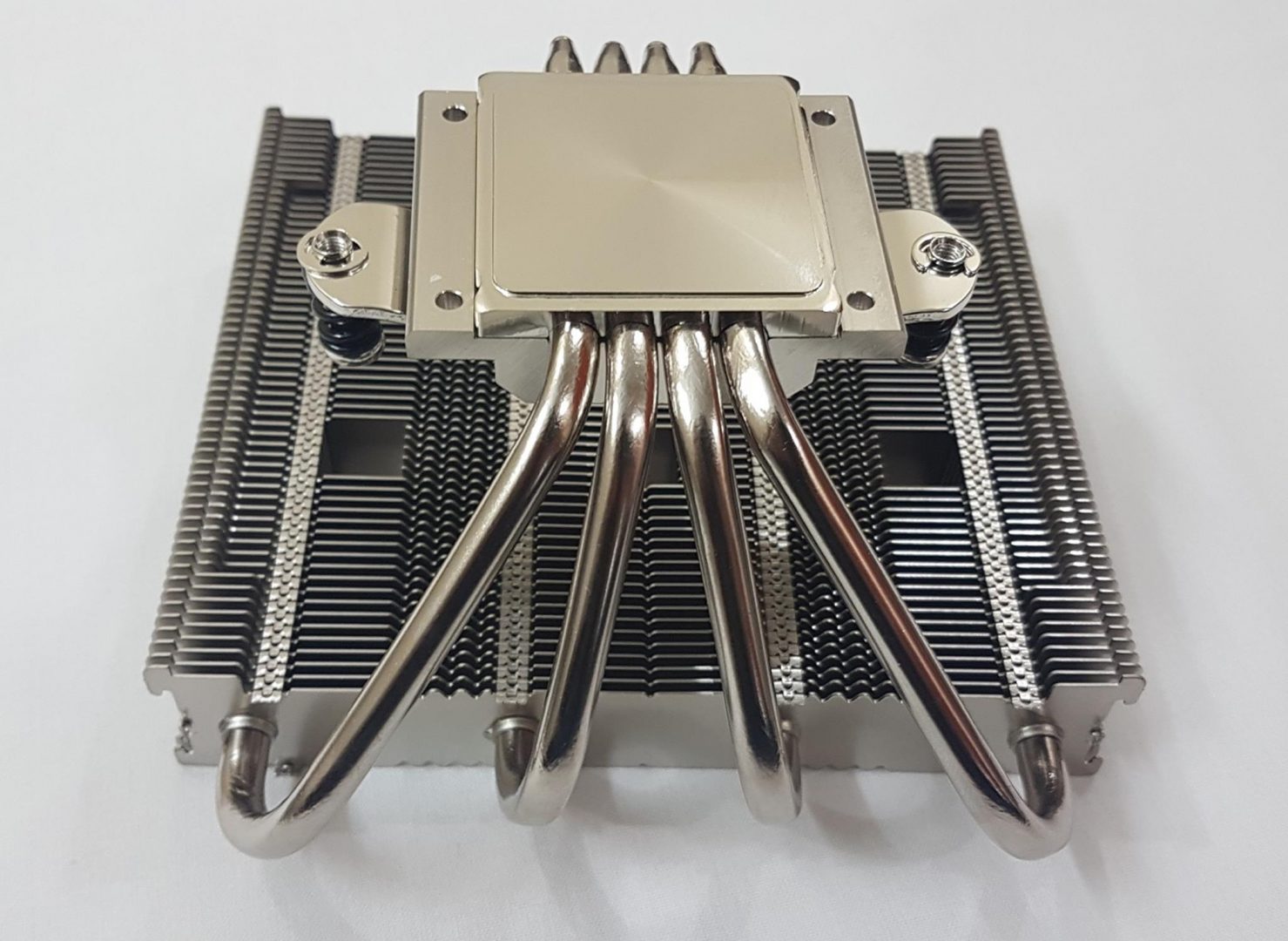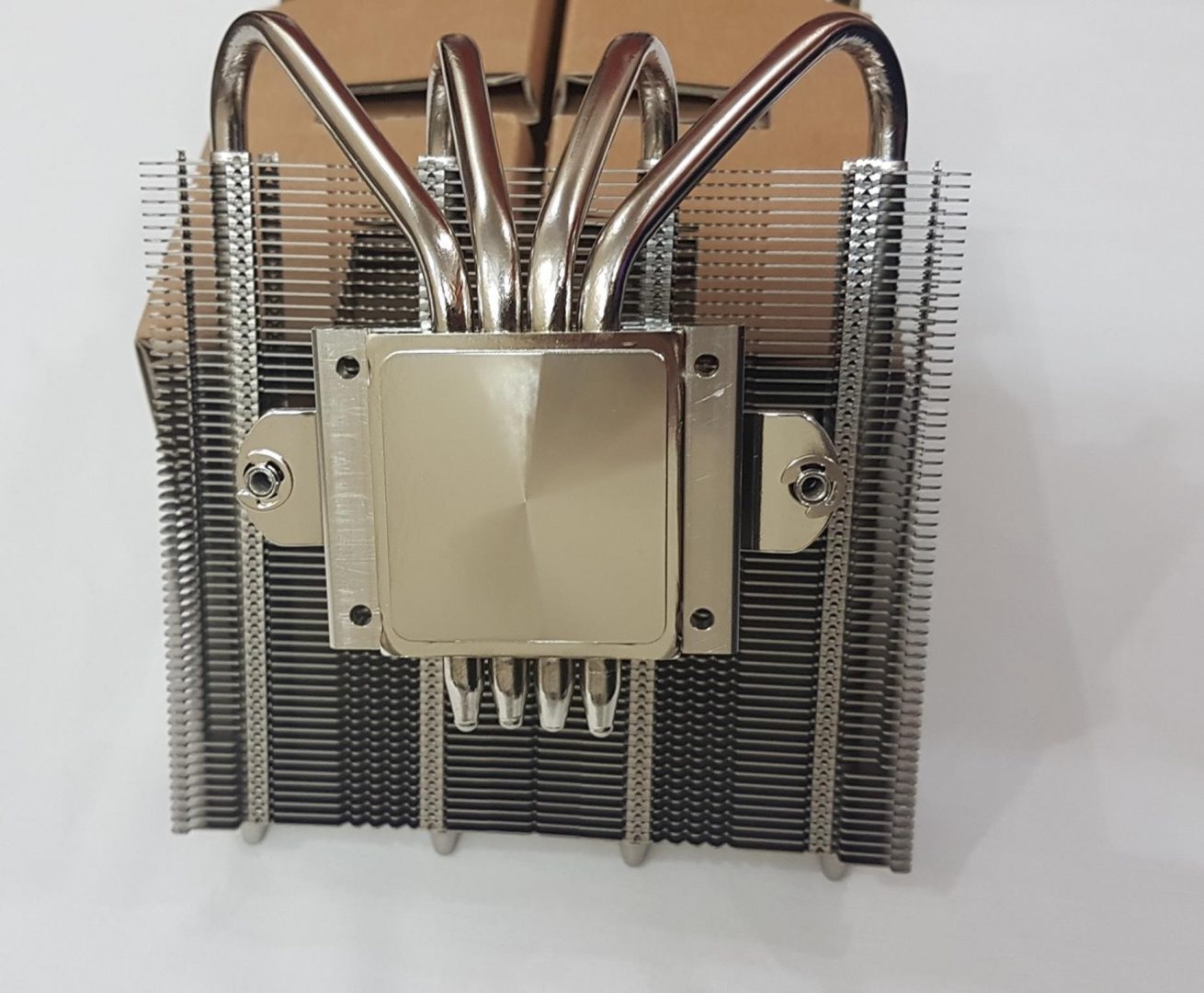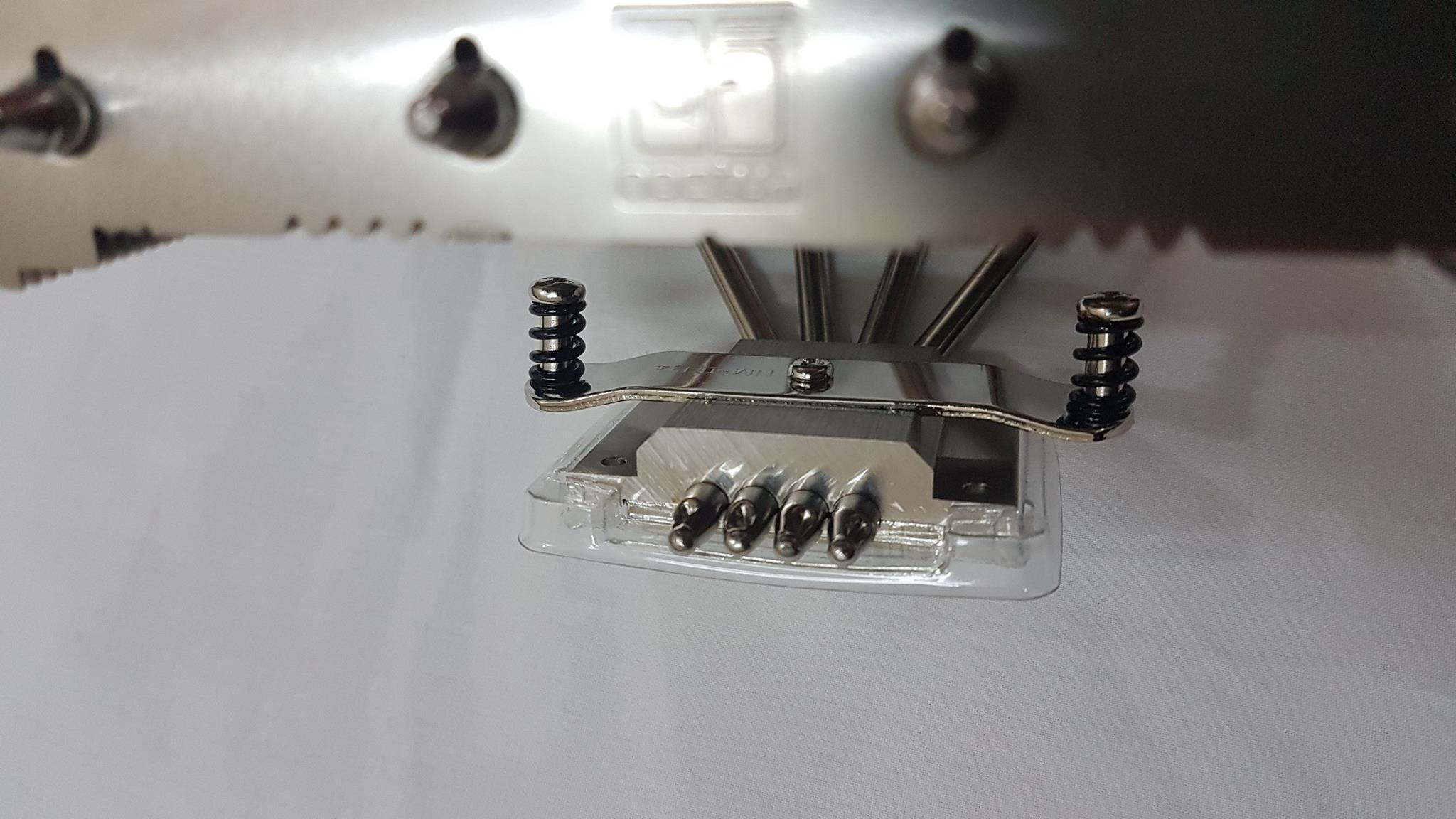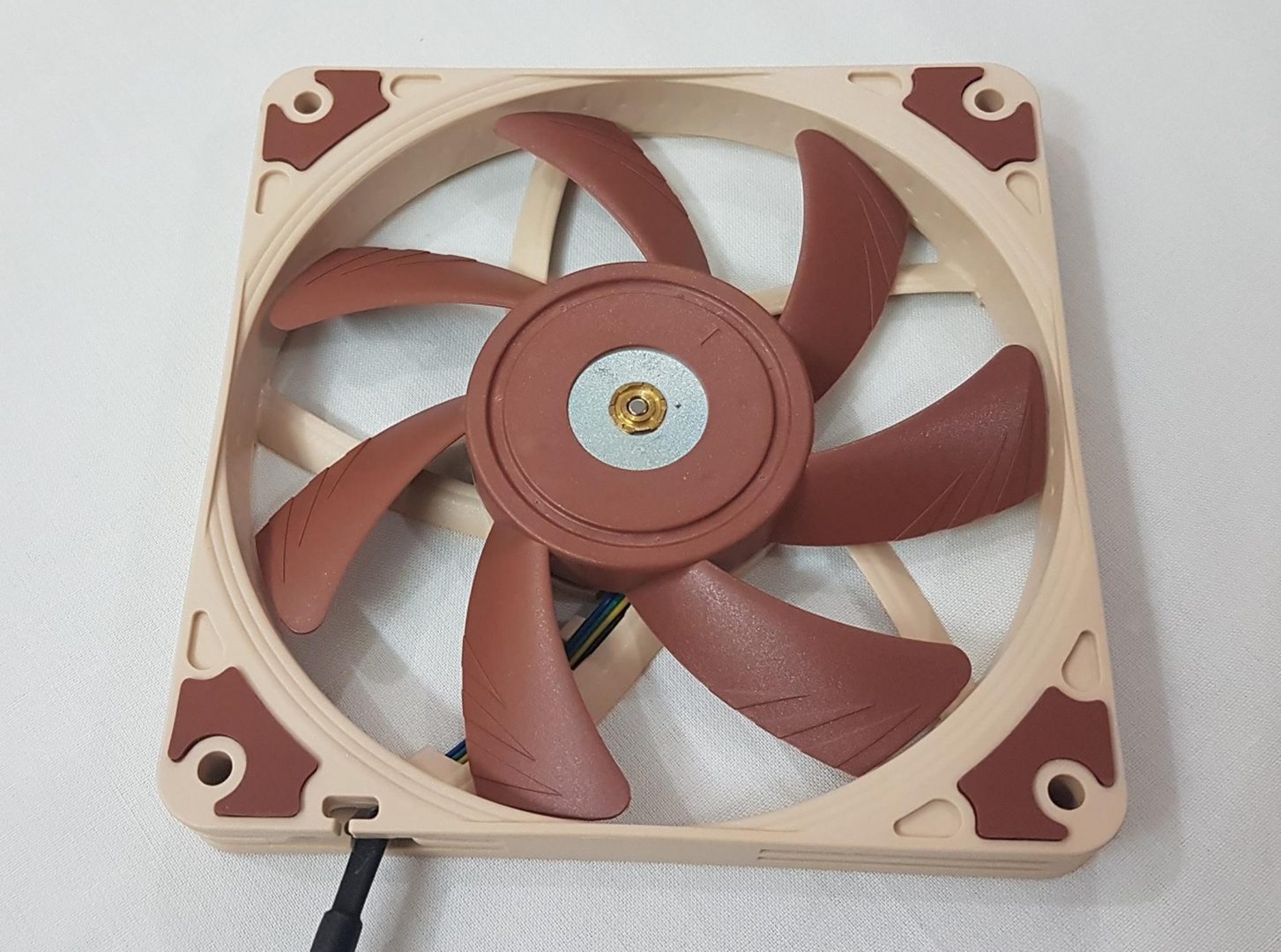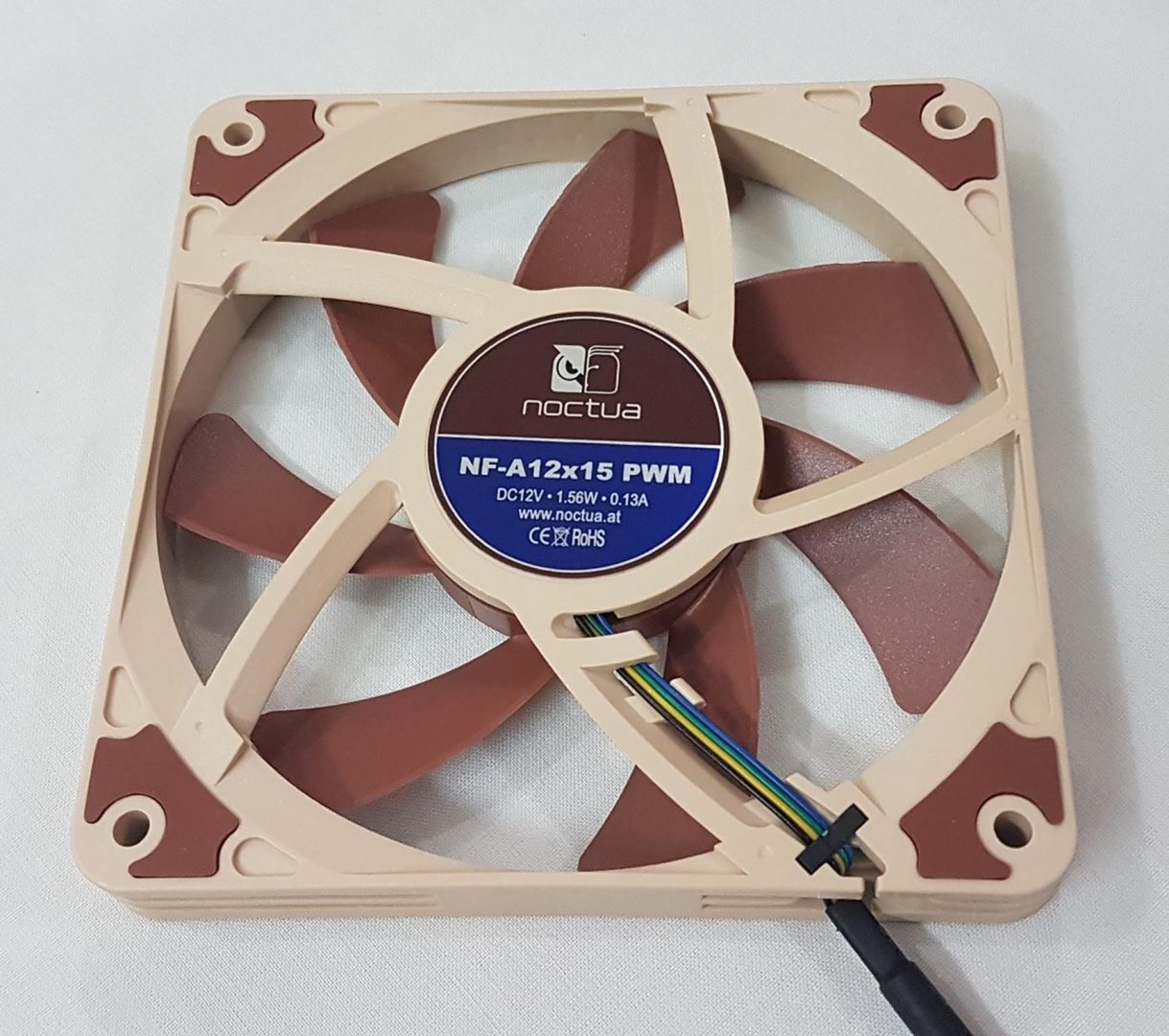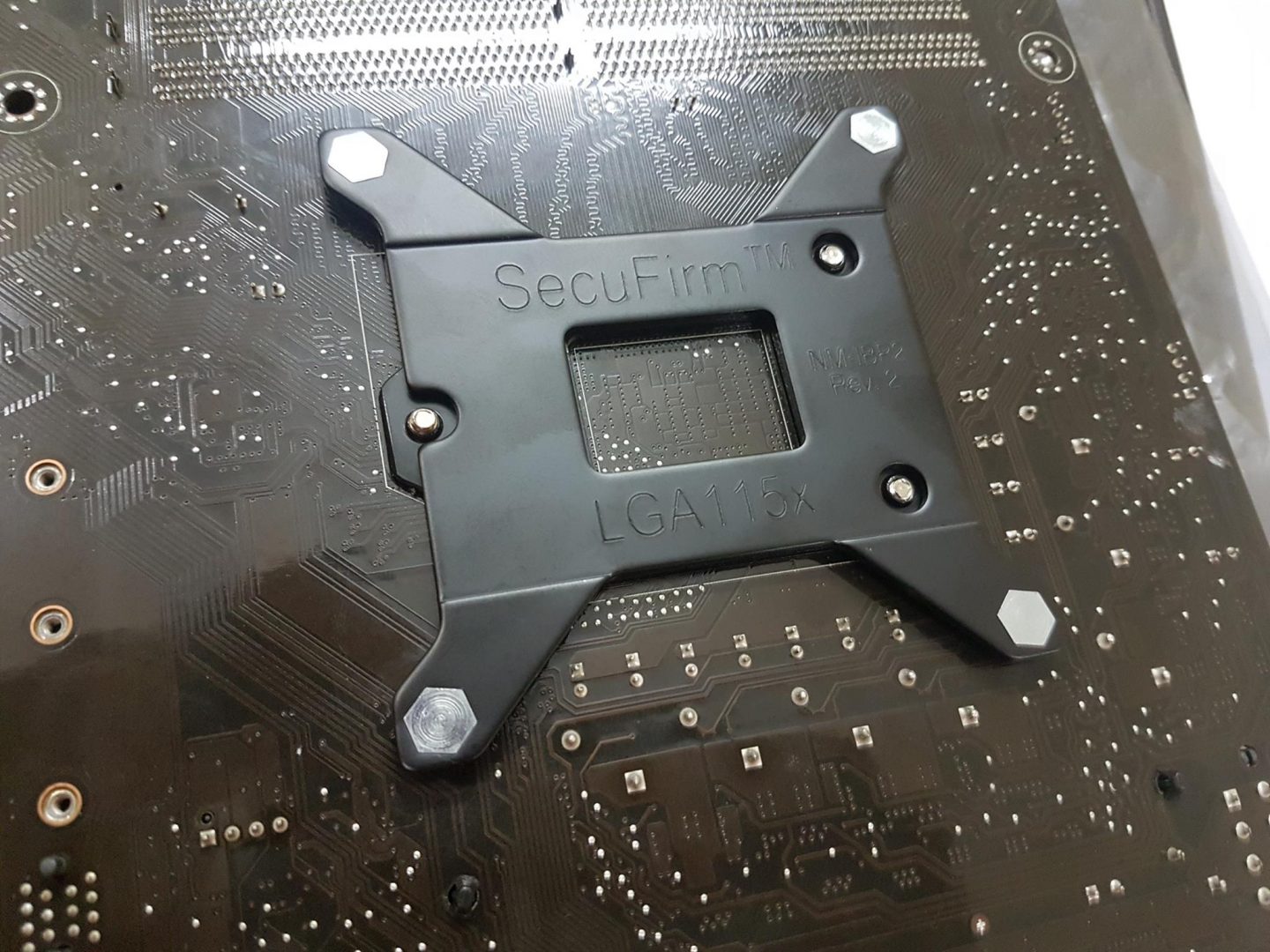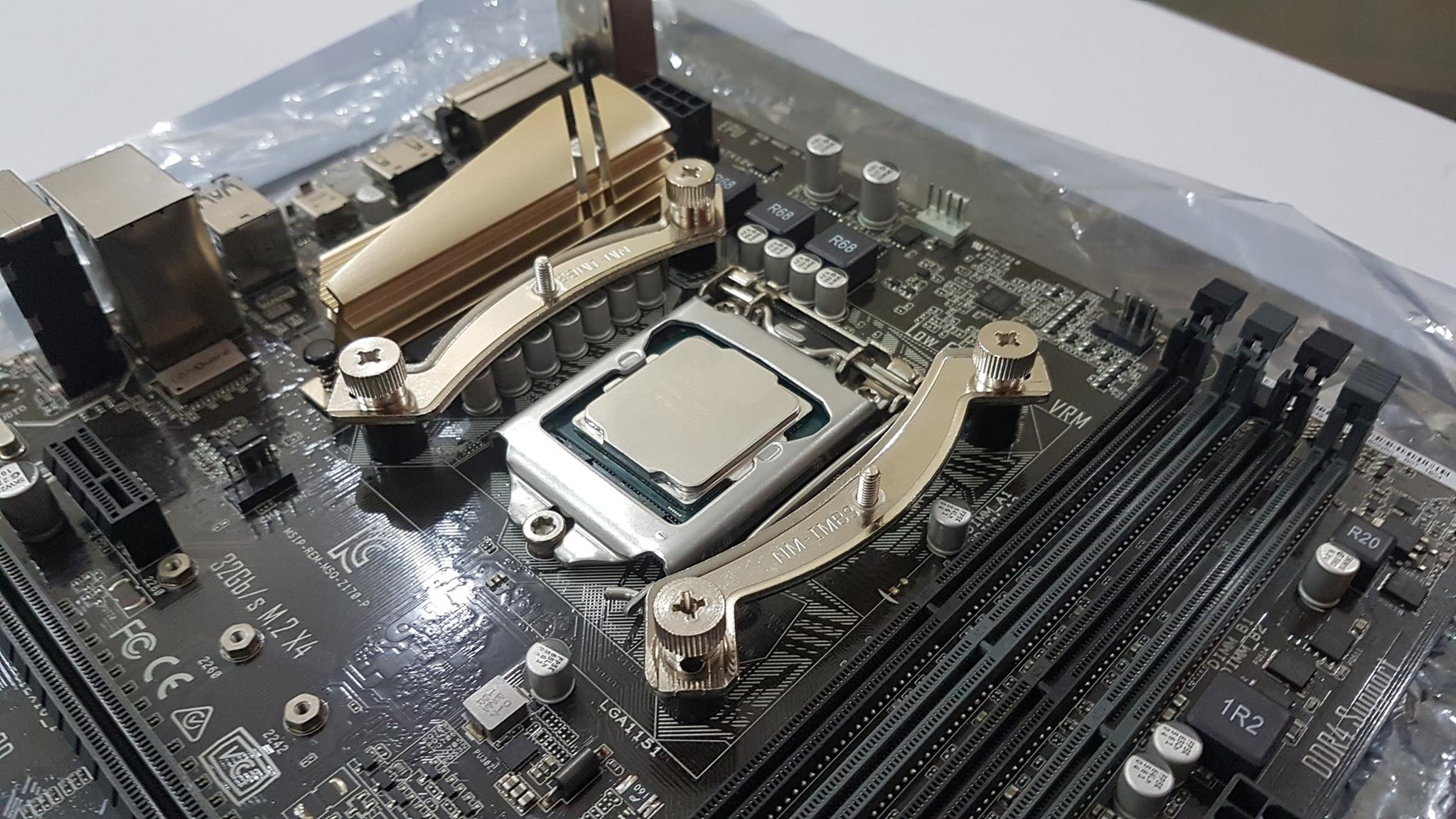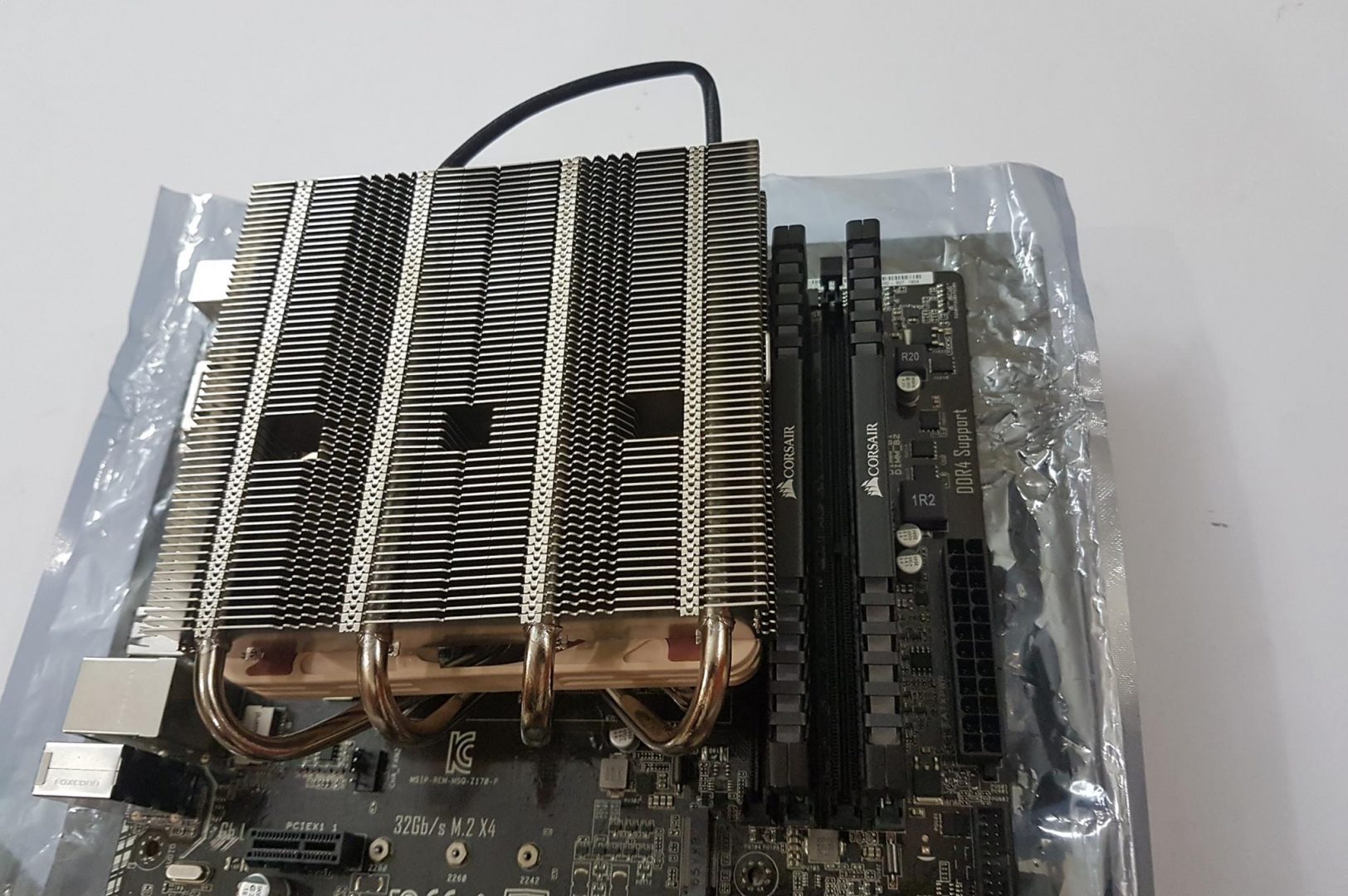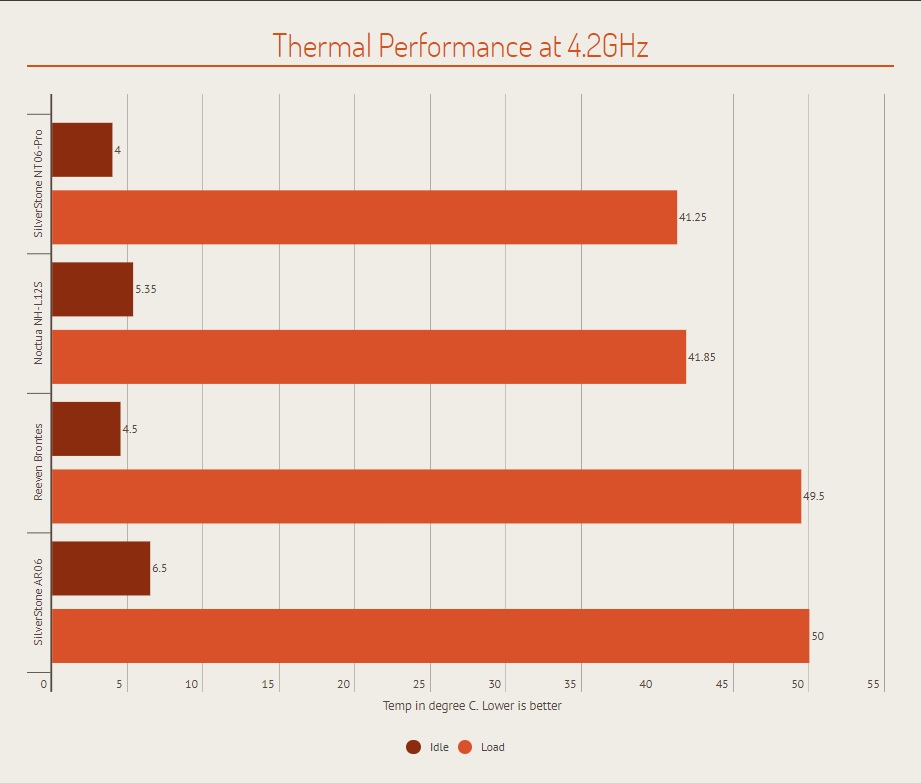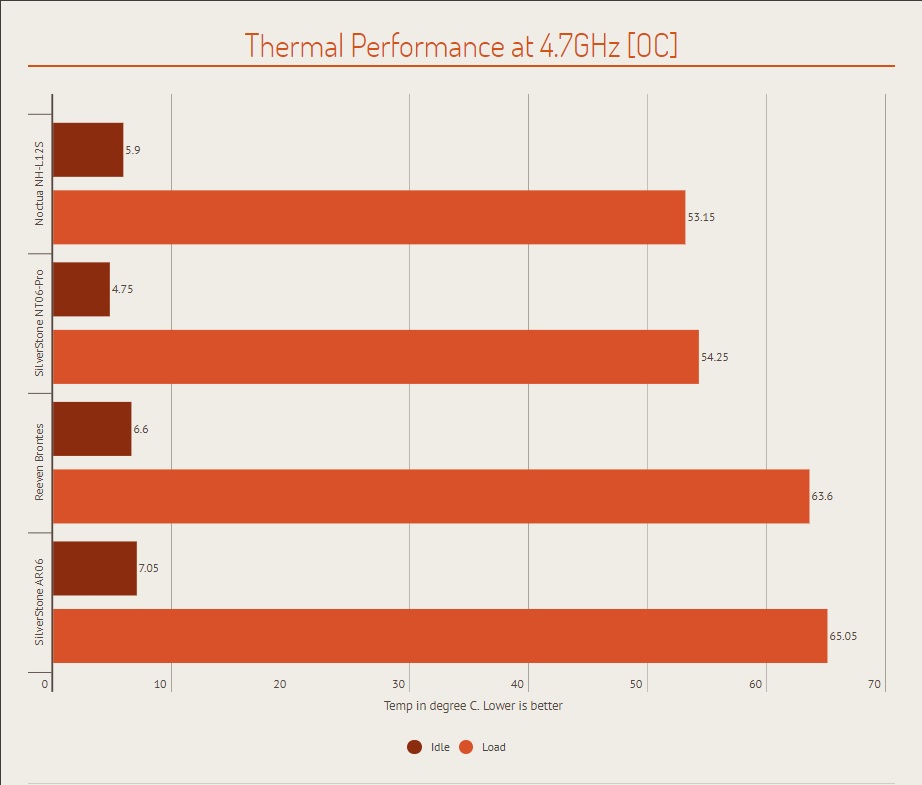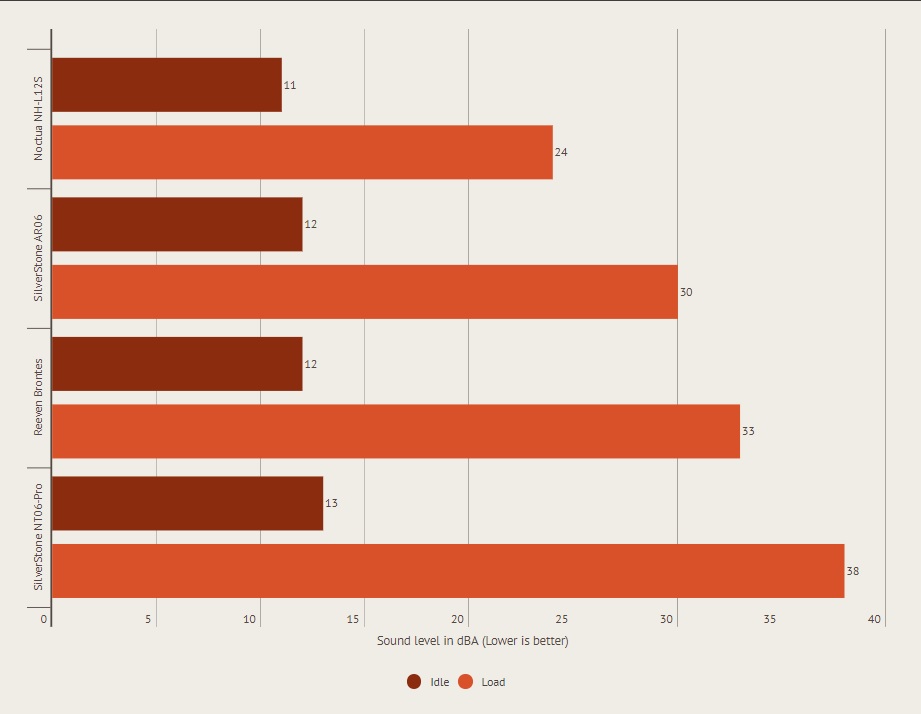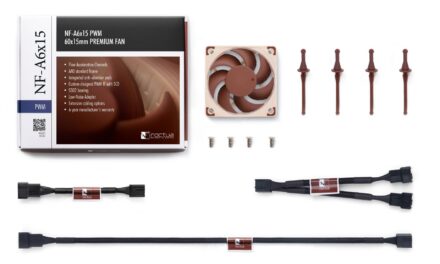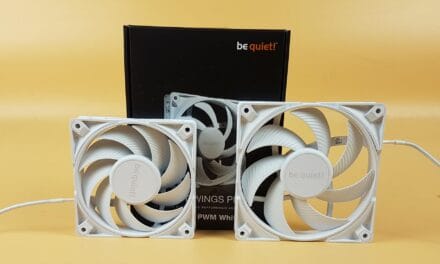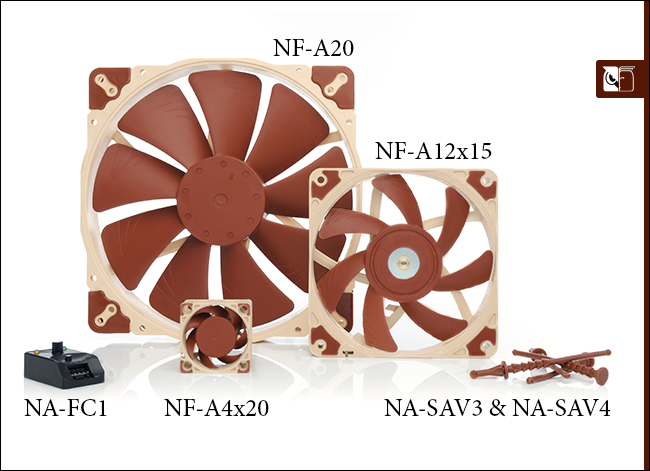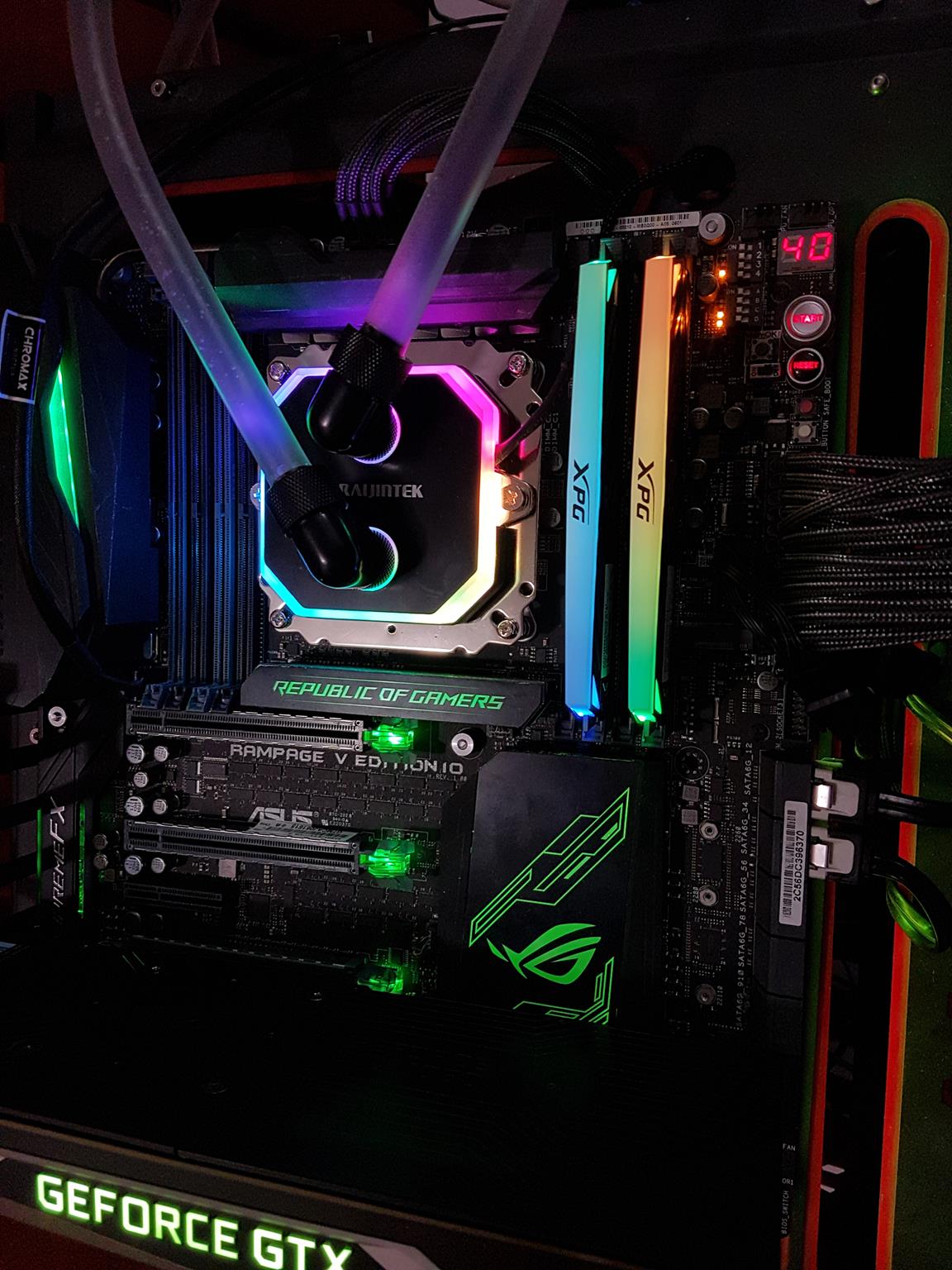
Noctua NH-L12S Lower Profile CPU Cooler Review
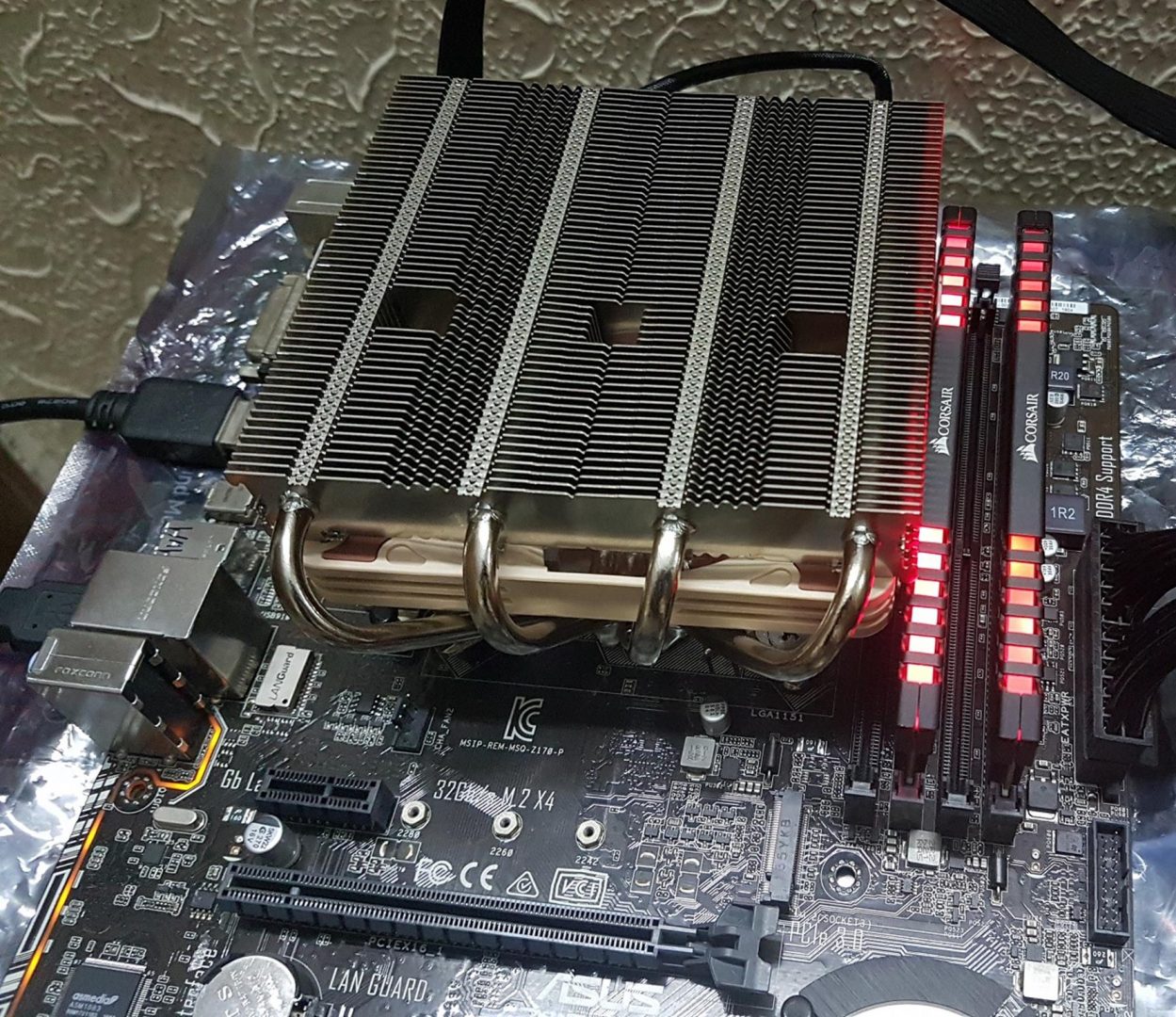
Introduction
Noctua originates from a collaboration between the Austrian Rascom Computer distribution Ges.m.b.H. and the Taiwanese cooling specialist Kolink International Corporation, pooling more than thirty years of experience in the development, manufacturing and marketing of high-end cooling components. Established in 2005, Noctua took international silent enthusiasts’ hearts by storm and quickly developed into one of the most acclaimed suppliers of premium quality quiet cooling products. Today, Noctua is present in more than 30 countries across the globe and working with several hundred sales partners. Chosen by noise-conscious PC users, system integrators and industry clients alike, Noctua has become synonymous with impeccable quality, excellent customer service and class-leading quiet cooling performance.
Today, I am taking a look at the company’s new low profile cooler, NH-L12S. The Noctua NH-L12S is a 120mm low profile CPU air cooler supplied with their powerful yet slim profiled NF-A12x15 PWM fan. This cooler is built around the Noctua’s NH-L12 but has been adjusted for better clearance, more silent operations and more cooling. It was put on the Intel’s hot chip, i7 7700k. How did it perform, let’s find out?
Item: NH-L12S
Manufacturer: Noctua
Price: $49.90 at the time of the review
UK Price: £44.99 from Amazon UK
Specifications
| Socket Compatibility | Intel LGA2066, LGA2011-0 & LGA2011-3 (Square ILM), LGA1156, LGA1155, LGA1151, LGA1150 & AMD AM2, AM2+, AM3, AM3+, AM4, FM1, FM2, FM2+ (backplate required) |
| Material | Copper (base and heat-pipes), aluminium (cooling fins), soldered joints & nickel plating |
| Dimension without fan | 70mm x 128mm x 146mm (H x W x D) |
| Dimension with fan | 70mm x 128mm x 146mm (H x W x D) |
| Weight without fan | 390 g |
| Weight with fan | 520 g |
| Fan Compatibility | 120x120x15 & 120x120x25 |
| Warranty | 6 Years |
| FAN | |
| Model | 1x Noctua NF-A12x15 PWM |
| Bearing | SSO2 |
| Max RPM | 1850 +/-10% |
| Max RPM with LNA | 1400 +/- 10% |
| Min RPM PWM | 450 +/-20% |
| Max Air Flow | 94.2 m3/h |
| Max Air Flow with LNA | 70.8 m3/h |
| Max Noise | 23.9 dBA |
| Max Noise with LNA | 16.8 dBA |
| Voltage Range | 12V |
| MTTF | > 150000 h |
Packaging and Contents
The cooler comes in the Noctua’s color theme cardboard box. The front side of the packing box has the cooler’s salient features summarized. A silver color sticker is attached on the right side with the text “successor to the award-winning NH-L12”. Cooler’s model is printed on the top and the left side. Noctua brand name and logo are printed on the bottom right side. The category of the cooler is clearly mentioned on the top with the text “L-Type Low-Profile Cooler”.
The back side of the packing box has salient info on the Noctua’s flagship cooler in 9 different languages. EAN and UPC info labels are printed on the bottom right side.
The left side of the packing box has the detailed specs of the cooler (heatsink and the fans). Cooler’s dimensions are highlighted pictorially on the right side under the cooler’s model.
The right side of the packing box has the cooler’s salient features and technologies printed.
The top cover has the cooler’s salient features printed in bullet format. Cooler’s model is printed on the left side. The Noctua’s brand name is printed on the bottom right side.
Opening the box would reveal the contents. There is a container box with all the supplied accessories and the user guides. Noctua has included a plethora of accessories even a screwdriver which I have found quite useful. Their legendary thermal paste NT-H1 is also included.
Removing the top container box would reveal the securely placed cooler in the recycled cardboard box. I am literally impressed with the details of the attention from the Noctua to their packing aspect. The base of the cooler is visible on the top side of its packing box. To protect that open base, the Noctua has added another recycled cardboard box.


Accessories
The accessories box has two main pictorial sections on the top side. The top section shows the graphical representation of the bundled accessories like Low Noise Adapters, Y-Splitter, Fan Clips, Thermal paste and the screwdriver. The bottom section focuses on the Noctua’s legendary SecuFirm2 Mounting System.
Opening the box will reveal the contents. We have the three sections in the box. The top right section contains all the necessary accessories for the Intel platform. The bottom right side contains mounting accessories for AMD platform. The left side has the common parts in it.
Noctua has provided the three users guides, one is for the AMD Sockets second is the Intel 2011 socket and the third one is for the other Intel sockets. I like this approach and the use of good quality paper with colorful printing and helpful pictures to help the users with the installation. It really gives a much more premium touch by Noctua.
Accessories include:
- Noctua Metal Badge
- 1x Screwdriver
- 1x NT-H1 Thermal Compound
- 1x LNA NA-RC7
- 2x AMD Mounting Bars NM-AMB11
- 4x NM-ALS1 Screws for AMD
- 4x NM-APS4 plastic spacers for the AM4
- 4x NM-APS5 plastic spacers for the AM2+/AM3+/FM1/FM2+
- 4x NM-APS1 Plastic Spacers
- 1x NM-IBP2 Backplate for Intel LGA non 2011
- 4x NM-IPS1 spacers for Intel
- 4x NM-ITS1 Thumbscrews
- 4x NM-IBT2 Bolts for LGA 2011
- 2x NM-IMB3 Mounting Bars
Closer look
Air cooling has been at the heart of the PC cooling for quite some time though we have seen quite a fierce competition from CLCs in this segment, which has not undermined the air cooling market. Air cooling is still considered safe as compared to the leakage risk which could potentially destroy the components. The Noctua has always provided their customers silent yet effective cooling solutions. NH-L12 was their prime cooling solution for SFF/HTPC builds. The NH-L12S is now taking its place with further improvements and optimizations.
The Noctua NH-L12S is a successor to the award-winning NH-L12. It is a compact, low-profile CPU Cooler that combines excellent compatibility, high efficiency and flexibility. It features special 120mm fan with slim-profile. Going with the NF-A12x15 PWM fan, the Noctua has managed to provide better quiet cooling performance without any compromise. This is a huge difference as compared to the NH-L12 which features 92mm fan. The cooler has the Noctua’s well-praised mounting mechanism called SecuFirm 2. Let’s take a closer look at this cooler.
The dimensions of the heatsink only are 22mm X 112mm X 128mm (H X D X W). There are 59 fins stacked together to form a dense stack. There are 3 cutouts in the main body on the middle to the lower section. These are placed so that the mounting screws can be accessed from the top for the ease of the installation. The fins are made of aluminum.
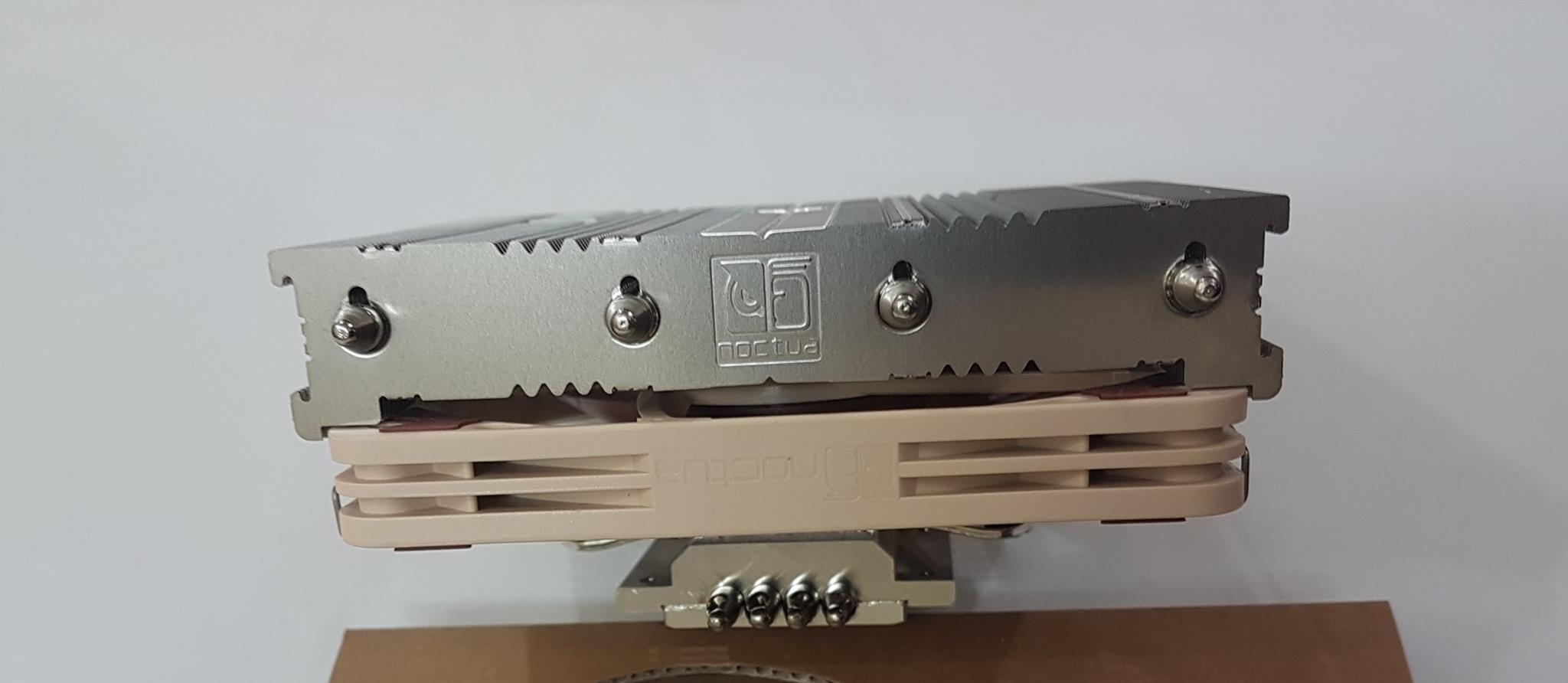
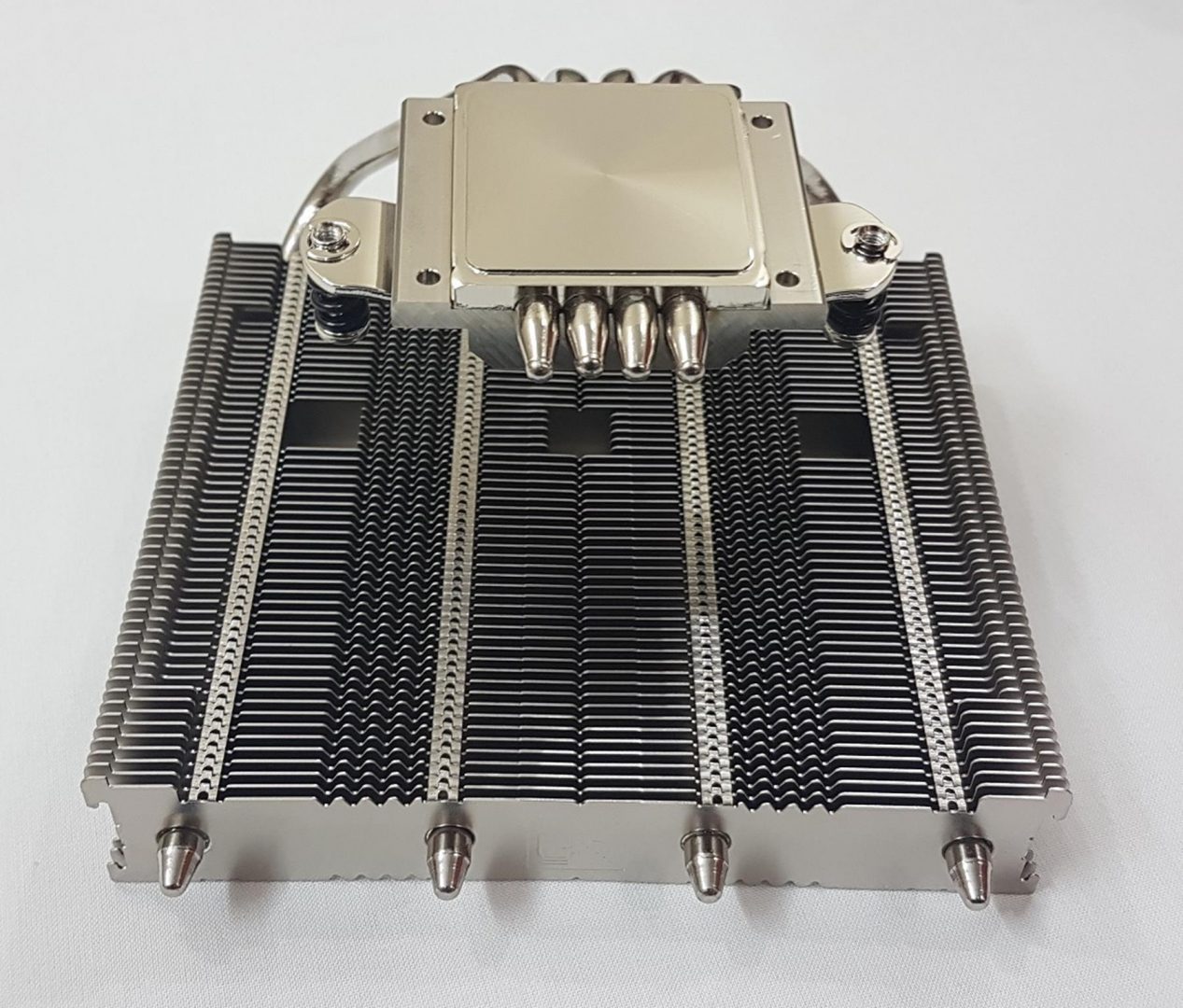
Looking at the front side of the heatsink, we can see the Noctua brand logo and the name in the middle. 4 heat pipes are coming out of the heatsink and terminated here. There is an equal distance between the terminating ends of the heat pipes. If this was the regular heatsink, then this would have been the top side of the heatsink.
Let’s take a look on the sides of the cooler. The left and right side of the cooler are symmetric. The top side and the bottom sides are raised while there is an inset on the middle section hence making it a stepped fin stack design. The metal fan clips are secured on these raised sides.
Looking at the backside of the heatsink, we can see the 4 heat pipes going inside the heatsink at an equal distance with each other. This helps ensures the maximum surface coverage for effective heat dissipation. The soldered portions of the heatsink are raised beyond the surface of the heatsink on the edges.
The cooler features 4 heatpipes each of 6mm thickness. They are implemented in copped and finished in nickel plating. The cooler has a copper base measuring 33mm X 37mm. The base comes covered with the transparent plastic.
There is a block on the top of the copper base with the mounting plate carrying two pre-loaded, spring-loaded screws. The heatpipes are soldered to the base above the baseplate. The heatpipes extend through the base and terminate at the far end of the copper base. Their alignment shows that they are placed together inside the base. This would help spread the maximum heat out of the base.
The Noctua has provided NF-A12x15 PWM fan. The Noctua has provided a Low Noise Adapter as well in the accessories should the user wants more silent operations. Honestly saying, I really don’t feel any need for this adapter. I tested the cooler with the fan at 100% of speed which is 1850 RPM +/- 10% and it was silent. The fan comes pre-installed on the heatsink.
The fan bears SSO2 bearing which is Noctua’s own design. The self-stabilizing oil-pressure bearing (SSO-Bearing) system has always been at the heart of Noctua’s award-winning premium fans. SSO combines the proven concept of oil-based hydrodynamic bearings with an additional magnet that supports the self-stabilization of the rotor axis. Due to the axis being stabilized by the magnetic field, Noctua’s SSO Bearing achieves higher precision and better longevity than conventional ball-, sleeve- or hydrodynamic bearings. SSO2 is the further optimized second generation of SSO. Made possible by the use of metal bearing shells and new injection moulding techniques, the magnet is now placed closer to the rotor axis and thus exerts higher magnetic force to it. This results in even better stabilization, precision and durability.
This is a PWM fan with the 4-pin connector. The power cable is sleeved and is approximately 195mm in the length. The maximum airflow is 94.2 m3h. Using LNA the maximum airflow is 70.8 m3h approximately. Maximum rated noise on this fan is 23.9 dBA which can be further reduced to 16.8 dBA using the supplied LNA. The power draw of this fan is 1.56W, 0.13A at DC 12V. These fans bear the traditional Noctua’s beige/brown color. The front side of the fan has the Noctua brand name and the logo embossed on it. There are rubber paddings on the corners to reduce the noise from the vibration. The heatsink can be used in Push/Pull configuration though there are no additional fan clips in the accessories. The heatsink can also accommodate regular size 120mm fan but only on the top side. Do keep in mind the clearance for the RAM which will be discussed in the coming section.
Installation
The Intel’s LGA-1151 socket was used to test the cooler. Please, note that I don’t have mini-ITX size motherboard which would have been an ideal choice as this cooler is recommended for the SFF/HTPC builds.
First, place the NM-IBP2 Intel Backplate on the backside of the motherboard such that the holes on the backplate align with the three screws coming out from the CPU socket on the backside of the motherboard.
Now, place the NM-IPS1 spacers on the long screws coming out of the 4 pre-drilled holes on the motherboard around the CPU socket. Next, decide upon the orientation of the cooler and place the NM-IMB3 mounting bars accordingly as shown in the picture below. Use NM-ITS1 thumbscrews to tighten the mounting bars on the backplate. This will hold the backplate firmly on the motherboard.
Take off the fan from the heatsink. Now, put the thermal paste on the IHS of the CPU. Place the heatsink on the top of the mounting bars such as the spring-loaded screws aligns with the screw holders on the bars. Start tightening the screws one by one to ensure that the block is fitted properly. Continue till the thread runs out.
Put the fan back on the heatsink depending upon where you want it to be installed, on the top which would increase the height of the cooler or in the middle of the heatsink and the base which would make the cooler truly a low-profile one. Connect the 4-pin power connector on the CPU fan header or any fan header of your desire. This would complete the installation of the cooler.
Compatibility and Clearance
Now comes the critical section equally as important as the thermal performance itself. There are three important areas to always check for whenever buying an air cooler. These are Clearance for the chassis, Clearance from the first PCIe slot and the Clearance for the DIMMs. When it comes to the low-profile coolers, we need to test for different orientations with respect to the motherboard’s IO side, VRM side and of course the DIMM clearance.
Clearance with Chassis
The Noctua NH-L12S has the dimension of 70mm x 128mm x 146mm (H x W x D) with the fan. It is suitable for the SFF/HTPC chassis in the market.
Clearance with first PCIe Lane
As the cooler was tested on the regular ATX size motherboard, I did not see any such incompatibility.
Clearance with Motherboard and RAM
I tested the cooler by trying to install in 4 orientations. You would need to be careful if the IO cover is raised as it could hinder the installation of the cooler in the 90-degree orientation. Same goes for the RAM. The cooler’s heatpipes can cover the first DIMM slot in that orientation.
This cooler has clearance for the RAM of up to 48mm height when the fan is installed on the top of the heatsink. Ideally, you would want to use low profile RAM with this cooler.

Test Bench
The following test bench was used to test the cooler:
- Intel i7 7700k [Thanks to the PCFanatics]
- Asus Z170-P [Thanks to the PCFanatics]
- Corsair 2x8GB Vengeance Red LED @ 2666MHz
- HyperX 120GB SSD
- Thermaltake TP DPS RGB 750W PSU
Asus Realbench 2.44 and the RealTemp 3.70 are used for the stress test and the temperature monitoring. The Noctua NT-H1 thermal paste is used to test all the coolers on my test benches. This helps ensure the standardization and to reduce the effect of any bundled thermal paste that could benefit the performance.
Methodology
First, the cooler is tested on the stock clocks i.e 4.2GHz at manual 1.16V Vcore. The average of the core temps is calculated to provide the temps at idle and under the load. The ambient temps are subtracted from these temperature readings to give the delta temps. My graphs report the delta temps. This helps in an uncontrolled environment to mitigate the temperature variation.
Next, the CPU is overclocked to 4.7GHz using manual 1.22V VCore. Three runs of the stress test program are carried out. The average of each run is separately taken and the highest reading of the three tests is used. Ambient temperatures are subtracted from the selected average temperature reading and delta temperature is reported on the graph. Each run was of 60 minutes.
Without further a due, let’s take a look at the results.
Results
On the stock clocks i.e 4.2GHz [fixed], the maximum temperature on the Noctua NH-L12S was 41.85C. The Silverstone NT06-Pro did a maximum of 41.25C. Both the coolers were neck-to-neck under stock testing.
CPU was overclocked to 4.7GHz. The Noctua NH-L12S did a maximum of 53.15C whereas the SilverStone NT06-Pro was doing at the 54.25C. Not a bad performance for a low-profile cooler. I would not blame the coolers if the temperatures look to be on the higher side as the chip I have got seems to have poor thermals on it. Even the coolers like the Noctua NH-D15 and the Reeven Naia 240 struggled on this chip.
With 24dBA on full RPM, the Noctua NH-L12S did a fantastic job.
Conclusion
The Noctua has provided an ultimate cooling solution in the form of their new premium NH-L12S cooler in the category of the low-profile ones. It is based on their legendary NH-L12 cooler. Not only this cooler has continued the legacy of the NH-L12 but also provides better clearance and cooling potential. This is a 120mm cooler having dimensions of 70mm x 128mm x 146mm (H x W x D) with the fan. It has 4 heat pipes each of 6mm thickness making a linear contact with the fin stacks. The base and the heat pipes are copper made with a nickel coating. The heatsink has 59 aluminum fins on it. The Noctua has clearly specified that this cooler is intended for the SFF/HTPC builds and that its rated TDP is 95W so overclocking on it is not recommended. Still, I put the cooler to the challenge and tested it with overclocking the 7700k.
The Noctua has provided an NF-A12x15 PWM fan which is a 120mm slim-profile fan. The fan has a maximum air flow of 94.2 m3h without Low Noise Adapter (LNA), a noise level of 23.9 dBA and 0.13A. This fan has Noctua’s SSO2 bearings. SSO2 is the further optimised second generation of SSO. Made possible by the use of metal bearing shells and new injection moulding techniques, the magnet is now placed closer to the rotor axis and thus exerts higher magnetic force to it. This results in even better stabilisation, precision and durability. The Noctua has bundled a plethora of accessories with the cooler. They have provided a Low Noise Adapter, their legendary NT-H1 thermal compound, three users guide (AMD, Intel 2011, Intel 115x/755) and even a screwdriver. And did I forget to mention that this cooler has 6 years warranty!
Being a low-profile, this cooler is targeted for the SFF/HTPC builds. It has a height of 70mm with a fan but when using two fans configuration, the overall height of the cooler will increase. The cooler has RAM height clearance of up to 48mm. For 90 degree mounting, raised IO cover will hinder the installation. Similarly, this orientation will block the first DIMM slot. Other than that, I have no other observation to report.
Value
The price of the Noctua NH-L12S at the time of this review is $49.90. This is an absolute stellar price. With this price and bundled package one is getting the absolute cooling solution.
Performance
Four low profile coolers were tested with the same configuration. The Noctua NH-L12S has emerged as a winner of all four though one must realize that the two of the coolers namely the SilverStone AR06 and the Reeven Brontes have a much slimmer profile and slimmer fans. All the coolers were put to cool the hot-headed i7 7700k chip. My chip has poor thermals on it out of the box so I would not be blaming the coolers if the temperature is high as even the Noctua NH-D15 and the Reeven Naia 240 have struggled to keep the temperatures in check. With such low sound level even at 100% RPM and excellent thermal performance in the given pool of the coolers, the Noctua NH-L12S has won our Performance award.
I am thankful to the Noctua for giving me the opportunity to review their NH-L12S.


